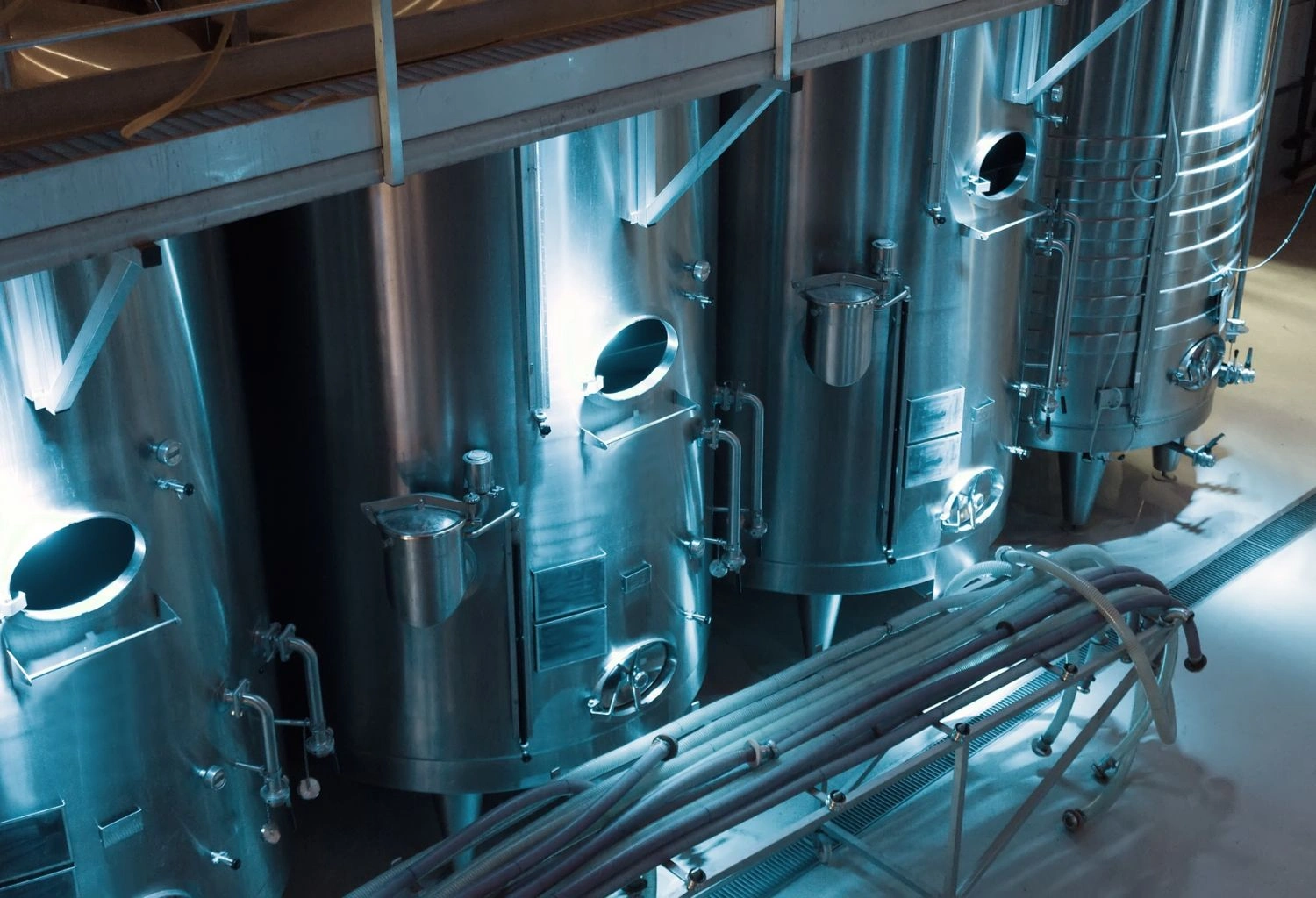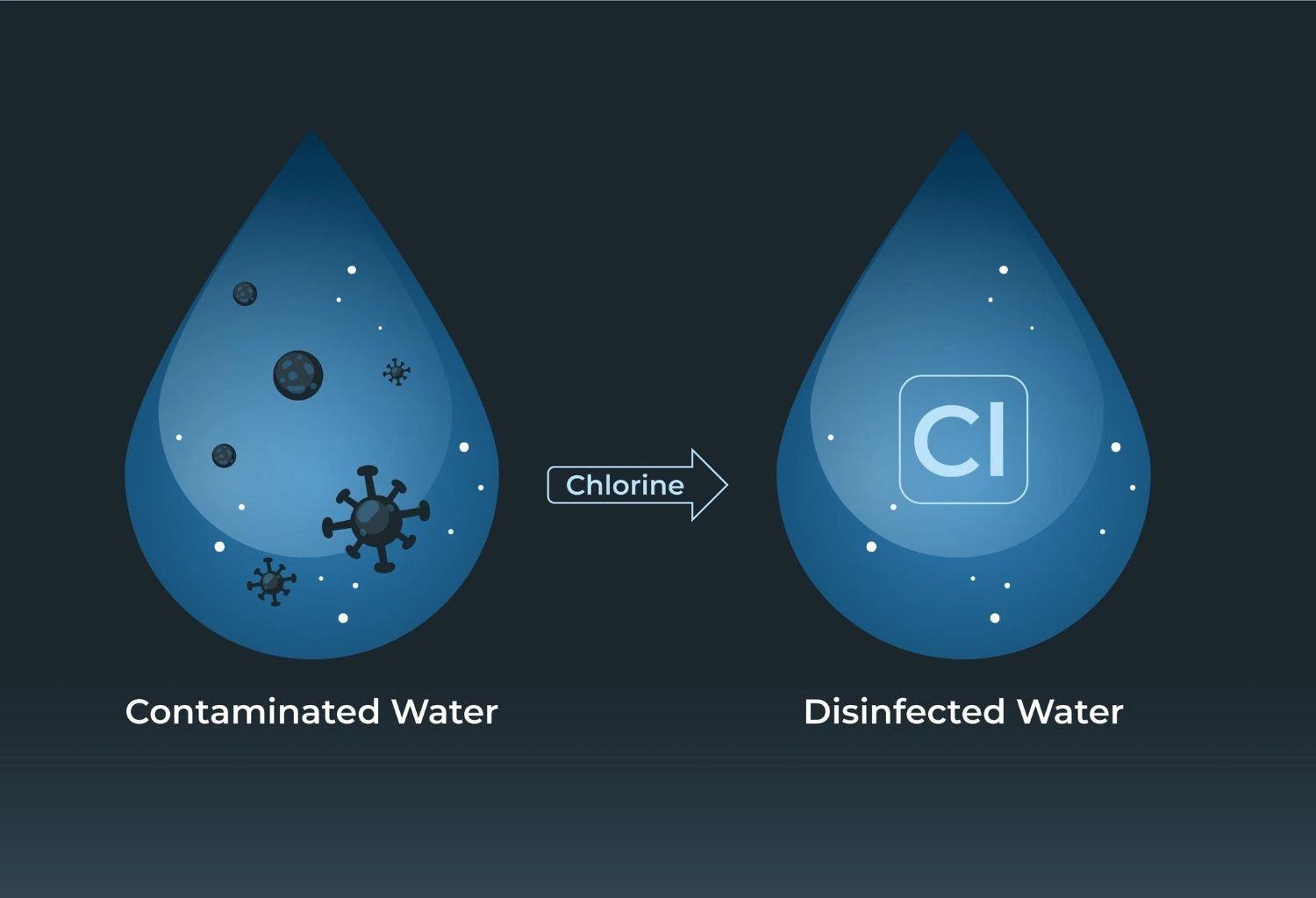Nickel sulphate recovery using membrane technology is transforming industrial wastewater management. With higher recovery rates, lower costs, and reduced waste, industries can now reclaim valuable nickel with minimal environmental impact. Learn how this sustainable method outperforms traditional recovery approaches and how WCSP is helping industries achieve efficient resource recovery in Pakistan.
Chlorination System
What Is Nickel Sulphate Recovery and Why Is It Important?
Nickel sulphate recovery is the recycling of valuable nickel recovered from wastewater streams, especially from applications such as electroplating, battery production, and metal finishing. Nickel is not just an expensive metal but a hazardous material if released untreated. Efficient recovery of nickel sulphate has two benefits:
- Environmental compliance through minimization of toxic effluents
- Economic return through nickel reuse in industry
With growing emphasis on zero-liquid discharge (ZLD) and resource recovery, nickel sulphate recovery is imperative for contemporary industrial water treatment plants.
Conventional Methods vs. Membrane Technology
Conventional Recovery Techniques:
- Chemical precipitation
- Ion exchange
- Electro-winning
These technologies, while being partially effective, tend to have disadvantages such as:
- High chemical consumption
- Low selectivity
- Complex sludge handling
- Energy-intensive processes
What Is Membrane Technology?
Membrane technology is a physical separation process involving semi-permeable membranes in order to separate dissolved compounds such as nickel sulphate from water. Popular membrane processes are:
- Nanofiltration (NF)
- Reverse Osmosis (RO)
- Ultrafiltration (UF)
In nickel sulphate recovery, NF and RO are used most frequently, as they have the ability to recover nickel salts selectively with water permeating through them.
How Membrane Technology Optimizes Nickel Sulphate Recovery?
1. High Selectivity and Recovery Rates
Membrane systems are very selective so that nickel sulphate can be concentrated and recovered to be reused. WCSP has installed systems recovering more than 90% of nickel content in some electroplating industries.
2. Less Generation of Waste
In contrast to chemical precipitation, membrane systems produce very little sludge. This implies:
- Lower disposal expenses
- Easy handling
- Adherence to NEQS and ISO standards
3. Lower Operating Expenses
Membrane systems, once in place, run efficiently with low maintenance and energy requirements. This results in long-term cost-effectiveness, particularly in round-the-clock industrial processes.
4. Reduced Footprint
Membrane systems take up less physical space compared to conventional treatment configurations—perfect for industries operating in urban Pakistan with less facility space.
This is the advantage of Nickel Sulphate Recovery using Membrane Technology
Following are the main advantages highlighted:
✅ 90–95% recovery efficiency
✅ Lesser use of chemicals
✅ Low sludge generation
✅ Limited system footprint
✅ Long membrane lifespan with regular maintenance
✅ Economically friendly and sustainable
✅ Can be used with bioremediation and electrocoagulation processes
Industries Most Benefited
- Electroplating
- Battery Production (Nickel-Cobalt-based)
- Stainless Steel Finishing
- Metal Processing and Mining
- Electronics and PCB Production
Nickel Sulphate Recovery: Process Flow with Membrane Technology
Here’s a simple step-by-step flow of how WCSP implements the process:
| Step | Process Description |
|---|---|
| 1 | Wastewater Collection from industrial rinse streams |
| 2 | Pre-treatment to remove suspended solids (sand filter, UF) |
| 3 | Nanofiltration (NF) to retain nickel sulphate |
| 4 | Concentrate stream collected and stored |
| 5 | Permeate (clean water) reused or sent to polishing |
| 6 | Recovered nickel sulphate reused in production lines |
Zero liquid discharge (ZLD)
How WCSP assists Nickel Sulphate Recovery?
Water Care Services Pakistan delivers:
- Custom-engineered NF/RO systems
- Site-specific pre-treatment solutions
- Membrane cleaning and support services
- Annual Maintenance Contracts (AMCs)
- Automation & SCADA integration
Challenges and Limitations
Although membrane technology has huge benefits, there are a few challenges:
Pros ✅
- High recovery efficiency
- Minimum environmental impact
- Long-term operational savings
- Automation ready
Cons ❌
- Initial capital investment
- Risk of membrane fouling (preventing through proper pre-treatment)
- Expert operator for optimization
But WCSP overcomes these with:
- Tailor-made system design
- Operator training
- Integrated cleaning-in-place (CIP) systems
- After-sales support
- Training for plant operators
Their group of engineers collaborates with industries throughout Pakistan to provide effective, cost-reducing recovery solutions optimized for long-term dependability.
Conclusion
Effective recovery of nickel sulphate through the use of membrane technology is not only a technological breakthrough—it’s a sustainable imperative for contemporary industry. From recycling valuable materials to remaining within environmental regulations, WCSP assists industries in Pakistan in turning wastewater liabilities into reusable assets. If you’re dealing with escalating chemical expenditures or regulatory pressure, nickel sulphate recovery through membrane technology is the answer.
Frequently Asked Questions (FAQs)
1. What is nickel sulphate recovery?
Nickel sulphate recovery is the process of reclaiming valuable nickel compounds from wastewater streams, especially in industries like electroplating and battery manufacturing.
2. Why is recovering nickel sulphate important?
It ensures environmental compliance by reducing toxic discharge and offers economic benefits by reusing expensive nickel resources in industrial processes.
3. How is membrane technology different from conventional recovery methods?
Unlike chemical precipitation or ion exchange, membrane technology requires fewer chemicals, generates less sludge, and offers higher recovery efficiency with lower operational costs.
4. Which membrane processes are used for nickel recovery?
Nanofiltration (NF) and Reverse Osmosis (RO) are primarily used to selectively recover nickel sulphate while allowing clean water to pass through.
5. How efficient is membrane technology in nickel sulphate recovery?
Membrane systems can recover up to 90–95% of nickel sulphate, making them highly efficient compared to conventional methods.
6. What are the cost benefits of using membrane systems?
Membrane systems require lower maintenance, reduced chemical use, and minimal sludge handling—leading to significant long-term cost savings.
7. Which industries benefit most from nickel sulphate recovery?
Electroplating, battery production, stainless steel finishing, electronics manufacturing, and metal processing industries gain the most from this solution.
8. What is the typical process flow for nickel sulphate recovery?
It includes wastewater collection, pre-treatment, nanofiltration, concentrate collection for reuse, and polishing of permeate water for discharge or reuse.
9. What challenges exist in membrane-based nickel recovery?
Challenges include initial setup cost, membrane fouling risk, and the need for trained operators—but these are manageable with proper design and support.
10. How does WCSP support nickel sulphate recovery in Pakistan?
WCSP provides custom membrane systems, automation, training, AMCs, and ongoing technical support tailored to each industrial site’s needs.



